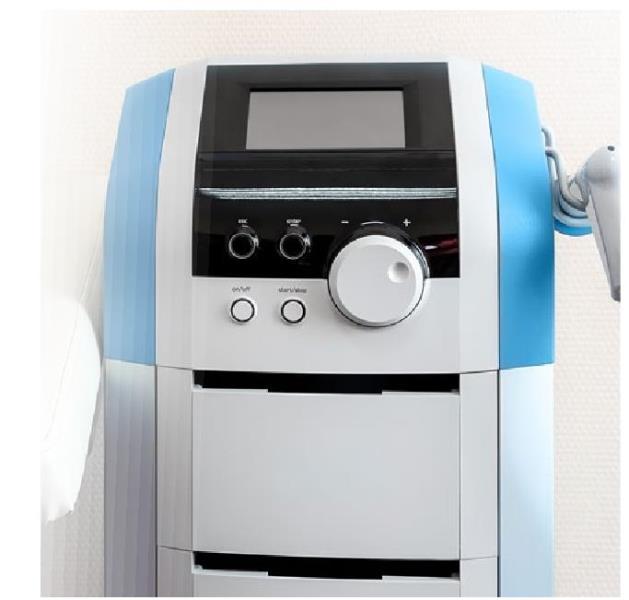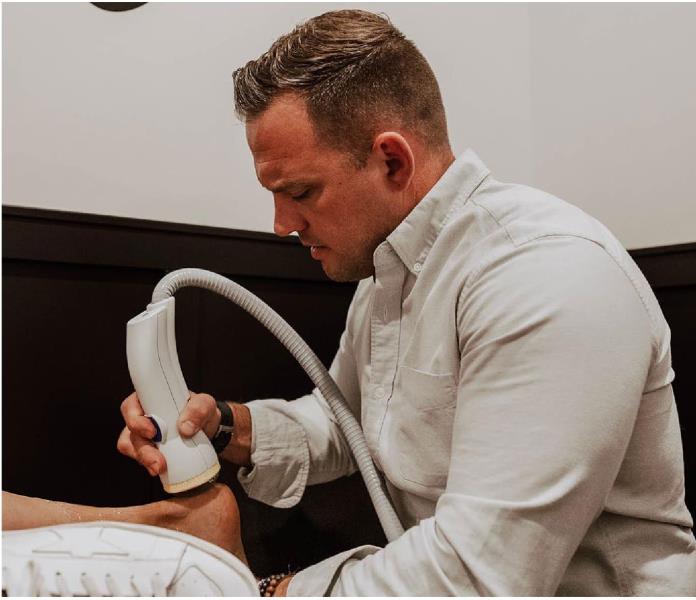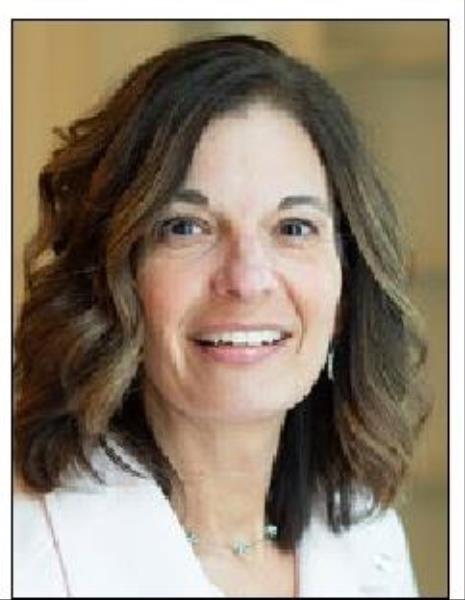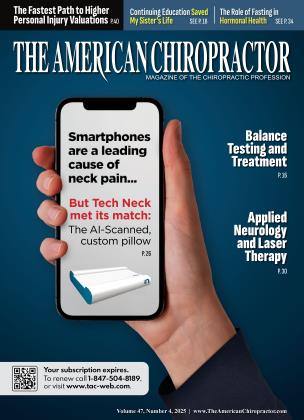
IN TODAY’S CHALLENGING HEALTHCARE ENVIRONMENT, chiropractors face increasing pressures — declining reimbursements, the need to diversify revenue streams, and the constant demand to improve patient outcomes.
For those looking to build a resilient, cash-based offering, shockwave therapy is a unique solution. By introducing this modality, chiropractors can keep patients inhouse, enhance their treatment effectiveness, and tap into an additional revenue stream, all while staying true to chiropractic principles of noninvasive care.
Many chiropractors are moving toward cash-based models to reduce dependency on insurance reimbursements. Adding a service like shockwave therapy that addresses common musculoskeletal conditions gives patients a nonsurgical option for managing chronic pain.
Dr. Mike Lynch, DC, founder of ADIO Health Chiropractic and cofounder of MUV Chiropractic Health Center in Boulder, Colorado, as well as former president of the Colorado Chiropractic Association (CCA), has successfully integrated shockwave therapy into his practice. By doing so, he treats patients more comprehensively and created a private-pay, cashbased model that provides steady cash flow.
Chiropractors often struggle with the philosophical implications of adding modalities to their practices. Dr. Lynch wrestled with this when he first considered bringing shockwave therapy into his clinic.
“I was skeptical at first,” he recalled. “I believed in keeping my practice focused purely on chiropractic adjustments.” However, his perspective shifted when he personally experienced the benefits of shockwave therapy for a shoulder injury. Recognizing its potential to enhance patient outcomes without drugs or surgery, he embraced it as a complement to his chiropractic care.
Shockwave therapy is a noninvasive treatment that uses high-energy waves to stimulate healing and relieve pain. Different types of shockwave devices generate these waves through various mechanisms, including acoustic (sound), electromagnetic, piezoelectric, and electrohydraulic technology. Regardless of the method, these waves interact with tissues to promote blood flow, reduce inflammation, and accelerate the body’s natural repair processes.
Among the types of shockwave therapy, Dr. Lynch opted for an electrohydraulic device because of its deeper penetration, larger focal zone, and broad focus, which allows for efficient, targeted treatments without requiring pinpoint precision.
“This broader treatment area is really helpful in a busy clinic,” said Dr. Lynch. “It lets us treat larger areas in less time, which means we can help more patients without sacrificing quality or feeling rushed — and still get home to spend time with our families.” By stimulating the body’s natural healing processes at a cellular level, shockwave therapy provides practitioners with a valuable tool to improve patient outcomes.
Dr. Lynch’s journey with shockwave therapy began with his own shoulder injury. As a former medical device sales professional, he had seen the limitations of surgical solutions. After a few treatments with a broad-focused shockwave therapy, he experienced significant relief from chronic pain.
“The results were undeniable,” he said. “I knew then that this was a tool I needed for my patients.” Over time, Dr. Lynch transitioned to a model where broad-focused shockwave therapy became a core part of his clinic.
“With minimal marketing, we’ve added an average of $20,000 to $30,000 per month in revenue,” he noted. “This technology allows us to help patients avoid drugs and surgery while also enhancing their quality of life.”
For chiropractors interested in incorporating shockwave therapy, it’s essential to evaluate the options thoroughly. Keep these key factors in mind to ensure you choose a reliable, effective solution:
Type of shockwave technology: Identify if the device uses acoustic, electromagnetic, piezoelectric, or electrohydraulic technology. Each type has different effects, focal zones, and penetration depths, impacting treatment results and patient comfort.
• Research and evidence: Is there clinical research supporting its efficacy? Clinical backing ensures the device provides real results and is safe. Lack of research can lead to ineffective treatment, patient dissatisfaction, and reputational risks.
• FDA indications: Does the device have FDA approval for specific medical uses? FDA indications confirm the device meets safety and efficacy standards. Using a device without FDA approval could lead to complications or legal issues.
• Manufacturing standards: Was the device manufactured in an FDA-inspected facility? This ensures quality and reliability. Poorly manufactured devices may have safety issues or inconsistent performance.
• Maintenance requirements: Understand maintenance needs — some devices require simple applicator changes, while others need daily solution replacements. Complex maintenance can lead to costly downtime and operational inefficiencies.
• Patient comfort: Is the treatment comfortable? Patient comfort supports positive experiences and encourages return visits. Uncomfortable treatments may lead to incomplete care and lower patient retention.
• Treatment zone: How wide and deep is the treatment zone? Larger zones allow for comprehensive care in less time. Small or shallow zones may require longer or more frequent sessions, reducing efficiency.
• Training and support: What training and support does the provider offer? Proper training maximizes device safety and effectiveness. Insufficient training can compromise patient safety and outcomes.
• Proven track record: Has the technology been used long enough to prove its reliability? A proven device is more trustworthy. New devices may carry unknown risks or inconsistent performance.
For chiropractors considering adding shockwave therapy, the key to success lies in structured implementation. This includes:
• Effective communication: Ensuring that patients understand the benefits and scientific basis of shockwave therapy.
• Training and staff integration: Proper training for staff or hiring a dedicated technician is essential for smooth operations and effective patient interactions.
• Patient education and care plans: Educating patients on what to expect, such as minor soreness after treatment, and creating structured care plans to encourage consistent, effective therapy.
 Dr. Mike Lynch uses broad-focused shockwave therapy to relieve pain and promote healing — helping patients get back to what they love, without invasive procedures or long recovery times.
Dr. Mike Lynch uses broad-focused shockwave therapy to relieve pain and promote healing — helping patients get back to what they love, without invasive procedures or long recovery times.
Chiropractors can make shockwave therapy a seamless, profitable addition. Dr. Lynch suggests offering initial discovery sessions for patients to experience the therapy, which often leads to follow-up appointments and word-of-mouth referrals. As he explained, “Patients come in for the therapy, experience relief, and often bring in friends and family.”
The chiropractic profession has a unique opportunity to enhance patient care and ensure business sustainability by embracing shockwave therapy. With its proven benefits, revenue-generating potential, and alignment with noninvasive care principles, shockwave therapy can be a game-changer for chiropractic clinics.
As Dr. Lynch put it, “Shockwave therapy allows us to help patients in ways traditional chiropractic care may not address, keeping them healthier and our practices thriving.” If you’re interested in learning more about how adding shockwave therapy could benefit your practice, Dr. Mike Lynch is available to share insights from his experience. He can be reached at MikeLynchDC @gmail. com.

Laura Leszczynski is the chief marketing officer for SoftWave TRT, a leader in broad-focused shockwave technology. She collaborates with healthcare providers to integrate innovative, patient-centered solutions that drive clinic growth and improve patient outcomes. You can reach her by emailing [email protected] or calling 414-587-9181. Learn more atwww.softwavetrt.com.
 View Full Issue
View Full Issue









